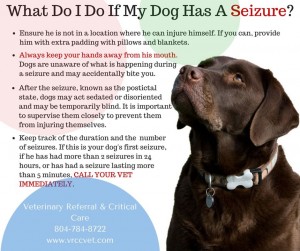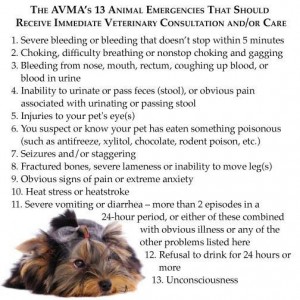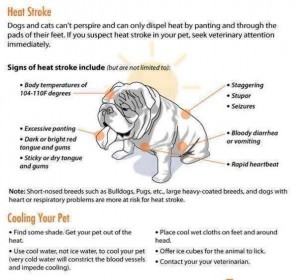PRAYERS AND LOVE
Please forward all prayer request for your Pets to;
patricia@coffeewithpat.org
Your prayers will go out to people all over the world.
Blessings, Pat “ “And now abide faith, hope, love, these three; but the greatest of these is love.” I Corinthians 13:13
THIS IS SOME GOOD ADVICE!
If a dog was the human you would learn stuff like: When loved ones come home, always run to greet them. Never pass up the opportunity to go for a joyride. Allow the experience of fresh air and the wind in your face to be, pure ecstasy. When it’s in your best interest, practice obedience. Let others know when they’ve invaded your territory. Take naps. Stretch before rising. Run, romp, and play daily. Thrive on attention and let people touch you. Avoid biting when a simple growl will do. On warm days, stop to lie on your back on the grass. On hot days, drink lots of water and lie under a shady tree. When you’re happy, dance around and wag your entire body. No matter how often you’re scolded, don’t buy into the guilt thing and pout…run right back and make friends. Delight in the simple joy of a long walk. Eat with gusto and enthusiasm. Stop when you have had enough. Be loyal. Never pretend to be something you’re not. If what you want lies buried, dig until you find it. When someone is having a bad day, be silent, sit close by and nuzzle them gently.
A Bay Area veterinarian is issuing a warning to pet owners after a dog accidentally died from saltwater poisoning.
Chris Taylor says he had no idea a swim at the beach with his dog would put his black lab in the hospital, but as the vet explains, dogs can easily get salt water confused for fresh water.
“He had such a vibrant spirit,” Taylor said. “If there was a tennis ball and a stick in a big body of water that’s what he would love to do most.”
Taylor is struggling to come to grips with the death of his 6-year-old black lab, O.G., who died accidentally after swallowing too much salt water at the beach.
“Towards the end of the evening, he was obviously tired and little wobbly after a long day at the beach,” Taylor said. “We took him to the car. He had a little bit of diarrhea he didn’t feel that well.”
That was Monday. The next day, Taylor says O.G. seemed to be feeling better but by Wednesday he stopped eating and even stopped responding when Taylor would call his name.
He rushed him to the animal hospital but, shortly after arriving, O.G.’s brain started swelling. O.G.’s body stopped responding to the medicine.
Taylor says he was forced to put his loyal companion down.
“It still feels surreal,” Taylor said. “It doesn’t feel like reality. I [have] to get a grip on that and realize that it is real and he’s gone.”
It’s a tragedy Taylor says no dog owner should ever have to go through.
Veterinarian Dr. Melissa Webster explained saltwater poisoning is tough to spot because every dog reacts differently.
“When I brought my puppy to the beach for the first time, I was literally there for only 10 minutes,” Dr. Webster said. “He was drinking it like it was water in the pool. So for him, 10 minutes was more than enough.”
“Even though we had fresh water and he was drinking that and we took breaks,” Taylor said. “Accidents can still happen.”
Dr. Webster says next time you take your dog to the beach, make sure you have plenty of fresh water. If your dog starts to experience diarrhea or vomiting, it could be a sign of saltwater poisoning.
If that happens, be sure to call your vet as soon as possible.
Just take a walk with me, by scrolling down this page to see new articles and information.
Cold Weather Pet Tips
Dogs, Cats and Even Horses and outside Animals need a better diet and shelter. Please read below.
This information is not meant to be a substitute for veterinary care. Always follow the instructions provided by your veterinarian. dog portfolio
Unseasonably cold weather is on the way, which means it’s time to give special attention to your pets and livestock, both inside and out.
Cold weather creates its own set of stress for all animals, but your pet needs your undivided attention now more than at almost any time of the year. Here are some winterizing tips for optimizing your animal’s comfort and well-being:
When the temperatures reach sub-zero, it’s time to give the outdoor cat and dog a break and invite them in, even if it’s in the garage. This goes for Northern breeds like Siberian huskies or Malamutes as well as medium-coated German shepherds, golden retrievers, and others in our region where they may not be acclimated to such extremes.
By “inside,” that doesn’t mean letting dogs and cats in and out of a warm house from night to day. Creating an abrupt temperature contrast can increase the risk of some infectious diseases. Consider housing them in the shelter of a well-built doghouse or bringing them into a tool shed or garage.
When you take your inside pooch out for “bathroom break,” stay out with them. If you’re cold enough to go inside, it probably is too cold for the pet to stay out much longer as well.
When you bring a pet in, wipe its paws and underside, making certain there are no ice balls clinging between the toes or on the sole of the foot. They can cause frostbite to an animal that is left outside for a significant time in sub-zero temperatures.
If you opt not to bring the dog inside, make certain its shelter is clean, dry and well insulated with straw, wood shavings or a blanket. Animals drag a lot of moisture onto their bedding from every trip outside in snow. Plan on changing the bedding as frequently as necessary or simply placing it in the dryer for a warm-up. Equally critical, position the opening, which should have a door flap, away from the direction in which snow and wind usually comes.
Outdoor cats will seek warmth and sometimes this includes near or on a car engine. This means that if they don’t move when you go out to start the engine the next time, they can be seriously injured or killed. Before starting the engine, rap on the hood a couple of times to chase them off from beneath the hood.
Pets that move about on sidewalks, driveways or streets run the risk of picking up rock salt, ice and other chemicals in their foot pads. Each time they are brought in, make certain to wipe all four feet thoroughly. There is a tendency for them to lick the salt off their feet, which can cause an inflammation of the digestive tract.
Keep an eye on your pet’s outside water. If it is not heated, it will need to be changed several times daily when temperatures dip far below freezing. Ice is not a substitute for clean water. Pet stores sell heated bowls, which can prevent water freezing.
For short-coated breeds like greyhounds, Boston terriers, and Chihuahuas, you might want to put them in a protective sweater before taking them outside. They will become chilled quickly after leaving a 72-degree house and walking onto single-digit-temperature turf. Also realize, sweaters are not a substitute for shelter. They can get wet and actually remove more heat from an animal than they conserve.
Be particularly careful when escorting elderly, arthritic pets outside. They will become stiff and tender quickly and may find it difficult to move about in the snow or ice. Keep them tethered tightly to your side if the route to the yard is icy. A bad slip can cause a ruptured disc, broken leg or other major injury.
If you live near a pond or lake, don’t allow your pets or livestock to run loose without some thought on your part. They may head for thin ice and fall through if they are not familiar with icy ponds. It is very difficult to escape these watery graves and equally challenging for you to reach the site safely.
Nutrition is a particularly important concern. Outdoor pets require more calories in the winter to generate energy to ward off the cold. As a result, add 10 to 15 percent more to its daily diet to allow it to meet those needs. Another way to meet cold weather calorie requirements is by adding some fats to their regular ration. Be careful though, fats can lead to diarrhea and dehydration if too much is added.
Horses and other livestock need a windbreak, cover, warm bedding, abundant high-quality feed, and fresh water, too. Cold weather alone won’t make healthy horses ill. But if exposed to soaking rains, snow and wind, they run the risk of catching pneumonia. Bedding like thick layers of straw or shavings is critical, since it will keep the animals off the cold, wet ground. Like pet shelters, the open side of any livestock enclosure should be faced be away from prevailing winds. Again, water must be heated or changed several times daily. A reduction in water intake and the resulting dehydration in horses can trigger colic.
The Pet Health Topics Web site is a free service provided by the College of Veterinary Medicine at Washington State University.
Hurricane Preparedness for Pet Owners
Dr. Ernie Ward
Having lived on the coast of North Carolina for the past 20 years, I’ve seen my fair share of hurricanes. Whenever hurricane warnings go out, pet owners begin to scramble. I’ve compiled a list of items and actions you should take to make sure you are pet-prepared if a “bad blow” should impact your home.
Use a pet carrier.
One of the most important pieces of equipment you can have during an evacuation or severe weather is a pet carrier. This is especially important when transporting small dogs and cats. Carriers are often required at many shelters and can serve as a safe space for a nervous pet. Be sure to label the carrier with your pet’s name, breed, sex, date of birth, your current address and contact numbers and any important medical information.
Make sure you have at least two weeks of your pet’s medications on hand.
Those of you that remember Hurricane Hugo back in 1989 recall that many homeowners weren’t allowed to return for a week or more. In the unlikely event a severe hurricane strikes, make sure you have more than just a few days’ worth of your pet’s medications. Make sure you have 14 days of prescription medications, heartworm and flea preventives. Pack them in a bag with your pet’s essentials and write down your current administration schedule in case you must leave your pet at a kennel or other facility. Even if it’s not time, I recommend applying heartworm and flea preventive prior to placing your pet in an evacuation facility. Your pet may be exposed to fleas and mosquitoes and the extra protection will only help.
Carry a week’s worth of food and water.
If possible, divide your pet’s meals into individual storage bins or bags. This will help ensure you bring enough food and assist others who may have to care for your pet during an evacuation. Carry bottled water (figure 24 ounces per day for a 20-pound dog and 8 ounces per day for a 10-pound cat) and bowls. Many shelters will not have adequate food and water for pets.
Bring at least two slip leashes.
I recommend you have the simple slip-type webbing or nylon leashes with you at all times. A frightened dog can slip out of a collar while a slip leash can hold them securely. A slip leash can also be used to restrain a cat in a pinch. Carry an extra leash in your pocket in case someone else needs it or you lose yours. I do.
Find out which evacuation shelters allow pets – before the storm.
Many pet owners complain they were turned away from evacuation shelters because they brought pets. Call your local and county officials and find out where you can take your pet before the storm hits. Your veterinarian or boarding facility may also take in pets during severe weather. Find out your options and make plans for your pet well in advance.
Bring a printed copy of your pet’s vaccine and pertinent medical history.
Contact your veterinarian a couple of day’s before a storm approaches to obtain any needed forms. This serves as a reminder to keep a medical folder for your pets that contains their latest physical exam reports, blood tests and proof of vaccines or licenses. If you wait until a hurricane is imminent, your veterinarian may not be able to provide you with these documents. If your pet has a medical condition, make sure you fully understand the diagnosis, most recent diagnostic test results, treatment and prognosis. In an emergency, quick access to this information can save your pet’s life.
Have identification and contact information on your pet and carrier.
Be sure your pet is wearing a secure collar with your current contact information, including cell phone numbers. If you don’t have an ID tag, write your information in indelible ink on the collar and carrier. Hopefully your pet has a microchip. After major hurricanes, microchips are often the only means to positively identify lost pets. Thousands of pets were never reunited with their owners after Hurricane Andrew because owners could not positively identify their pets and prove ownership. If possible, include a contact not travelling with you in a safe area.
Take a photo of your pet before you leave your home.
A current photograph on a cell phone can be the difference between lost and found in the event you become separated during a storm.
Prepare for anxiety.
Hurricanes can last for many hours. Even the most storm-hardened pet can crack after numerous hours of howling wind, changes in barometric pressure and being confined in a carrier. You should carry anxiety wraps, calming herbal remedies and prescription medications if you suspect your pet needs it. Talk to your veterinarian a few days beforehand to stock up on aides for your pet’s anxiety.
Litter, piddle pads and trash bags.
I can’t tell you how often even the most prepared pet owner forgets this one vital necessity. Bring a small baking pan and litter for cats, piddle pads, towels and trash bags for dogs – plenty of them.
Shampoo, brushes and towels.
If you’re evacuated, things can get messy. Be prepared by stashing a small bottle of shampoo and a brush in your pet’s emergency kit.
Pack plenty of patience.
As an experienced evacuee, I can tell you that nothing happens as quickly or smoothly as you’d like it to. Keep in mind that everyone is just as stressed nervous and worried as you are. Be courteous, understanding and helpful. I’ve had pet owners make unreasonable demands (imagine being asked if we had time to bathe and groom a pet during a Category 3 hurricane!), and be downright rude to the staff members that were taking time from their homes and families to care for pets during a crisis. If everyone remains calm, stays focused and slows down, everything will go that much more smoothly.
No one plans on a major storm disrupting their lives. What you can prepare for is how you’ll respond when the hurricane watches and warnings are announced. Good luck, be safe, and may we all be organized and ready.
To keep up to date on Animal Health cares, or get more information on your pets health needs, visit one of the links below:
Fly your beloved pet safely at:
You are able to monitor your pets while on plane
Insurance for your Pet. Get quote at link below:
Coffee With Pat Pet Team want to thank each and everyone whom may have contacted our Pet Site with their Prayer Requests last year.
We also want to thank all the Prayer Partners for taking the time to Pray for a sick animal and/or family pet.
We also want to thank Ms. Ann Hopewell for the great work she does daily in sending Pet Prayer Requests out, as well as sending notes of encouragement and Pet Love Notes to those whom may have lost a Pet this year.
God Bless each of you.
Pastor Pat
The Aman Family
Joe and Pat
Daughters: Tara and Anna
Pets: Cali and Kala







 Media – Books
Media – Books